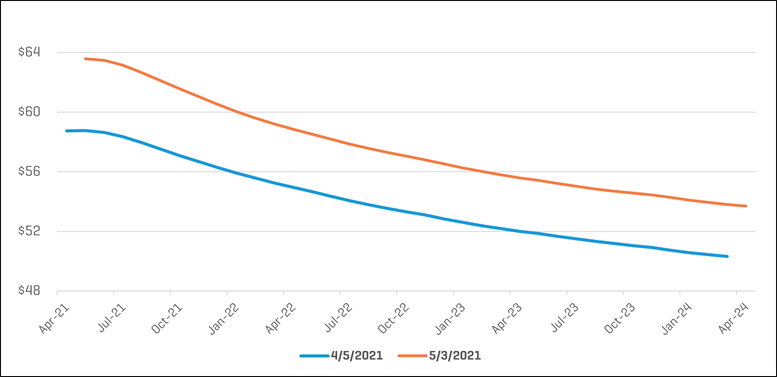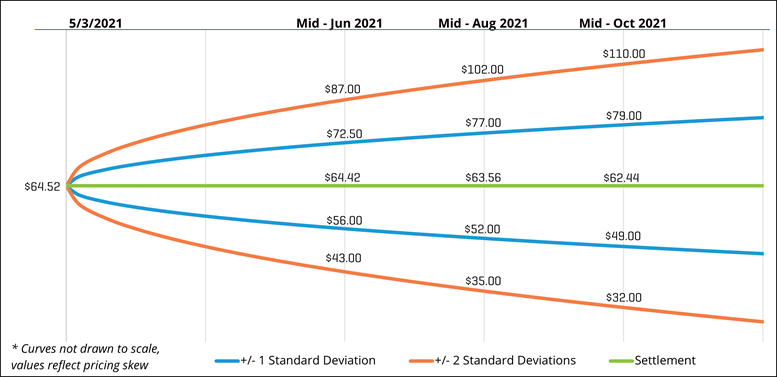Is Biden’s Goal of Carbon-Free Electricity by 2035 Possible?
Is Biden’s Goal of Carbon-Free Electricity by 2035 Possible?
According to a recent article in Scientific American, the backbone of President Biden’s plan to use infrastructure spending to advance climate policy is a clean electricity standard for the power sector that has the potential to be the most aggressive ever enacted by the federal government. Tucked into President Biden’s $2.3 trillion infrastructure proposal is the aim of "achieving 100 percent carbon-free electricity by 2035."1 To make this goal a reality, new clean sources must be added, and carbon capture for existing sources must be implemented.
New Clean Energy Sources
Thirty states and the District of Columbia have some version of a clean energy standard, but President Biden’s proposal outlines a radical shift for the federal government that would see far more solar, wind, and other renewable sources come online. To get there, the federal government also would have to invest hundreds of billions of dollars in the infrastructure needed for the build-out, such as transmissions lines. To incentivize the build-out of a green grid, rebates would be given to utilities for expenditures on adding solar, wind, and other carbon-free or energy-efficient resources. At the same time, utilities that failed to meet benchmarks would be assessed fees for going too slow.2
Carbon Capture, Utilization, and Storage3
Although adding new solar and wind resources will help the relative percentages, investments in capturing carbon output from existing power production facilities will also be necessary to achieve the goal. According to a recent Wells Fargo analyst report, Carbon Capture Utilization and Storage ("CCUS") will be a key component of decarbonizing the global energy system to achieve Paris Agreement goals.
The carbon outputs are captured at their source and transported to either be used in certain chemical processes or be injected into depleted oil and gas formations for permanent storage.
To frame the growth outlook, estimates of aggregate CO2 CCUS capture and storage by 2060 and 2070 range from 140 to 220 billion tons. This compares to approximately 0.26 billion tons stored to date, implying just 0.1% to 0.2% of the required task has been completed.
Creating industry capacity to capture these volumes of carbon emissions will require significant investment. Wells Fargo’s analysts calculated an industry value of $110 to $160 billion with annual revenue of $80 to $120 billion. Or, with more aggressive multiples in line with other renewable/de-carbonization ventures, the CCUS market could exceed $500 billion by 2030. Whichever valuation approach is best, the future market size dwarfs the current estimated CCUS market value of only $10-15 billion.
As President Biden’s infrastructure bill is debated and potentially modified, what is clear is that tax credits for development, or tax penalties for carbon creation, will drive the pace and direction of future development.
WTI Strip Prices Increase
Over the past month, spot prices and near-term futures prices for the WTI contract increased by over $4.00 per barrel.
Oil Strip Prices - One Month Change

The oil price curve remains in "backwardation," reflecting the market’s expectation of lower future spot prices.
Oil Price Outlook
The price distribution below shows the crude oil spot price on May 3, 2021, as well as the predicted crude oil prices based on options and futures markets. The blue lines are within one standard deviation (σ) of the mean, and the red lines are within two standard deviations.
WTI Crude Oil $ /BBL

Based on these current prices, the markets indicate that there is a 68% chance that oil prices will range from $52.00 and $77.00 per barrel in mid-August 2021. Likewise, there is about a 95% chance that prices will be between $35.00 and $102.00. By mid-October 2021, the one standard deviation (1σ) price range is $49.00 to $79.00 per barrel, and the two-standard deviation (2σ) range is $32.00 to $110.00 per barrel.
Key Takeaways
Remember that option prices and models reflect expected probabilities, not certain outcomes, but that does not make them any less useful. If someone asks you longingly if oil will be over $80 per barrel again soon, you now can respond with "the markets indicate there is a 16% probability that oil prices are expected to get to $79 per barrel by this October, so $80 oil is looking more attainable."
- "Biden’s Infrastructure Plan Would Make Electricity Carbon-Free by 2035", Scientific American, Scott Waldman on April 1, 2021
- Ibid
- Wells Fargo Equity Research Industry Update — April 19, 2021, "Oil Macro: Carbon Capture Utilization & Storage (CCUS) One of Many High-Growth De-carbonization Solutions"

